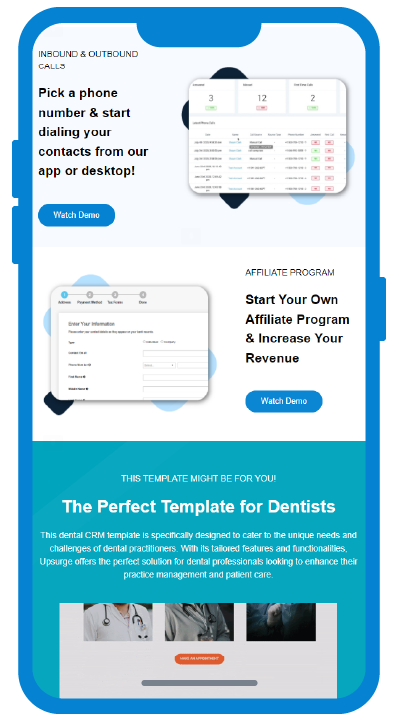
Email outreach has become a cornerstone of modern sales strategies, offering businesses direct communication with potential customers. As the sales landscape evolves, companies increasingly use technology to streamline their outreach efforts and enhance their engagement with prospects.
One of the most effective tools in this domain is cold email outreach, which can significantly boost sales opportunities when combined with CRM software.
This article explores how automated email outreach, powered by CRM software, can revolutionize your sales strategy, providing practical insights, tips, and industry-related statistics.

Cold email outreach refers to sending unsolicited emails to potential customers without prior contact with your business. Unlike traditional email marketing, which targets existing customers or subscribers, cold email outreach aims to reach new prospects. This form of outreach is often used to introduce products, services, or opportunities to a broader audience, making it a crucial tool for lead generation and sales engagement.
Tip: Personalizing subject lines can increase reply rates by 30.5%, and including the recipient’s first name can lead to a 43.41% increase in reply rates. This highlights the importance of personalization in enhancing cold email effectiveness.
Cold email outreach is a powerful method for expanding your reach and identifying potential customers. However, a calculated approach is necessary to avoid frequent problems like low response rates or being flagged as spam. By comprehending the subtleties of cold email outreach, You may design campaigns that improve interaction rates and establish a relationship with your target audience.
Adding cold email marketing to your sales approach can substantially improve lead generation and deal closing. Cold emails are a direct channel to new clients, allowing you to introduce your products or services and establish initial contact.
If done well, cold email outreach may be an affordable means of reaching many people and sparking interest in your products or services.
Note: The average cold email reply rate is 8.5%, but you can boost it by targeting the right prospects, personalizing emails, and following up consistently. Following the 30/30/50 rule, if 50% of your 1,000 emails are opened (500), aim for at least 150 replies (30% of opens).
Cold emails play a vital role in the early stages of the sales funnel. They help in qualifying leads, identifying potential pain points, and initiating conversations that can eventually lead to conversions.
By integrating cold email outreach into your overall sales strategy, you can create a consistent pipeline of prospects and opportunities.
Despite its potential, cold email outreach comes with its own set of challenges. Common issues include low response rates, high bounce rates, and the risk of emails being marked as spam.
These challenges often arise from poorly targeted campaigns, lack of personalization, and inadequate follow-up strategies. To overcome these obstacles, using CRM software to manage and optimize your outreach efforts is essential.
Tip: Ensure your email list is clean and up-to-date to avoid deliverability issues. Use email verification tools to remove invalid addresses and warm up your email domain before launching large-scale campaigns.
For more insights, check out our article on Why CRM Software is Essential for Effective Cold Emails.
To overcome these obstacles, tactics, technology, and persistence are used. By leveraging CRM tools and implementing best practices, You can increase the efficacy of your cold email outreach and ensure the appropriate people see your messages at the proper moment.

CRM software enhances email outreach by centralizing customer data and streamlining communication processes. Integrating CRM with your email outreach efforts allows you to manage your contacts more effectively, track interactions, and automate follow-ups.
More individualized and focused communication is made possible by this connection, which is crucial for cold email campaigns to be effective.
87% of B2C marketers leverage automation in their email marketing strategy.
With CRM software, You can divide your audience into several groups according to past interactions, industry, and firm size. By segmenting your list, you can better target specific audiences with your email outreach, making it more impactful and relevant.
CRM connectivity also enables you to monitor the effectiveness of your email campaigns in real-time, giving you insightful data that you can utilize to improve your approach.
One of the key benefits of using CRM software for email outreach is the ability to automate various aspects of the process. CRM system Automation tools let you schedule emails, set up drip campaigns, and trigger follow-ups based on customer actions or time intervals.
This automation ensures that your outreach is consistent and timely, which is critical for maintaining engagement with prospects.
Tip: Use CRM automation to send personalized follow-up emails after a prospect opens or clicks on your initial email. This real-time engagement can significantly improve response rates and lead to more meaningful conversations.
Automation also frees up valuable time for your sales team, authorizing them to focus on better strategic activities such as closing deals and nurturing high-priority leads.
By automating routine tasks, you can ensure that no lead drops through the cracks and that your outreach efforts are as efficient as possible.

CRM software helps with outreach and plays a vital role in managing leads throughout sales. CRM systems provide a comprehensive view of where each prospect is in the sales funnel by tracking interactions and recording essential information about each lead. Thanks to this visibility, sales teams can concentrate on leads with the highest conversion rates and prioritize their efforts.
By incorporating CRM, your email outreach can benefit from a smoother information flow that facilitates improved decision-making and more successful sales tactics. This integration makes it more likely that the leads you produce will become paying clients.

The first step in setting up an automated email campaign with CRM is to plan and structure your campaign carefully. Start by defining your campaign goals, such as lead generation, product promotion, or customer retention.
Once your goals are clear, identify your target audience and segment your email list accordingly. This segmentation allows you to tailor your messages to different groups, increasing the relevance and effectiveness of your outreach.
Tip: Use A/B testing to refine your email subject lines, content, and calls to action. By testing different variations, you can identify what resonates best with your audience and optimize your campaigns for better results.
Structuring your email campaign involves determining the sequence and timing of your emails. Consider the customer journey and design your email sequences to guide prospects through each stage, from awareness to consideration to decision.
By mapping out your campaign in advance, you can ensure a cohesive and strategic approach that aligns with your overall sales objectives.

Once your campaign is planned, the next step is to implement email sequences and automation within your CRM system. Email sequences are pre-written messages sent automatically based on specific triggers, such as a potential customer downloading a whitepaper or subscribing to a newsletter.
These sequences allow you to engage with leads consistently and move them through the sales funnel without manual intervention.
Including personalized content in your email sequences can increase response rates by up to 32.7%. CRM tools enable the automation of such personalized sequences, making them more scalable and effective.
To set up email sequences, use your CRM to define the triggers and conditions to initiate each email. For instance, you may design a sequence so that three days after a prospect receives your first email, it sends them a follow-up email.
By automating these interactions, you can maintain engagement with your prospects and ensure that your outreach is both timely and effective.

Effective email outreach is not a one-time effort; it requires continuous monitoring and optimization. Use your CRM’s analytics and reporting features to track key performance metrics such as open, click-through, and conversion rates.
These insights will help you understand how your campaigns are performing and where improvements can be made.
In addition to monitoring performance, be prepared to make adjustments to your campaigns as needed. This could involve tweaking your email content, adjusting your segmentation criteria, or experimenting with different send times.
By being proactive and responsive to the data, you can continuously improve your email outreach efforts and maximize your sales opportunities.

Effective cold emails require a deep understanding of your audience and a clear focus on delivering value. The critical elements of a successful cold email include a compelling subject line, personalized content, a clear value proposition, and a solid call to action.
The subject line is your first impression and should grab the recipient’s attention while conveying the purpose of the email.
Tip: Personalized subject lines boost response rate by 30.5%. Therefore, personalizing subject lines appears to impact outreach campaign results significantly.
Personalization goes beyond just using the recipient’s name; it involves tailoring the content to their needs and challenges. Use the information from your CRM to customize the email body, addressing the recipient’s pain points and offering a solution that aligns with their goals.
A solid call to action should be clear and direct, guiding the recipient toward the next step, whether scheduling a call, downloading a resource, or visiting your website.

One of the challenges of email outreach is finding the right balance between personalization and automation. While automation is essential for scaling your outreach efforts, personalization is key to making your emails resonate with recipients.
The goal is to use automation tools within your CRM to personalize emails at scale, ensuring that each message feels tailored to the individual recipient.
Experian says personalized emails deliver six times higher transaction rates. This statistic underscores the importance of personalization in driving engagement and conversions.
To strike the right balance, use CRM data to segment your audience and create targeted email templates that can be easily customized. For example, you can automate inserting specific details such as the recipient’s name, company, or industry-related challenges into your emails. This approach allows you to maintain automation efficiency while delivering personalized and relevant content.
Email deliverability is a critical factor in the success of your cold email campaigns. Ensuring that your emails reach the recipient’s inbox rather than being filtered into spam requires careful attention to several factors.
These include maintaining a clean email list, warming your email domain, and following the best email content and formatting practices.
Tip: Use email verification tools to clean your email list and remove invalid addresses regularly. This helps maintain your sender’s reputation and improves the chances of your emails reaching the intended recipients.
Another important aspect of email deliverability is avoiding spam triggers in your content. This includes steering clear of overly promotional language, excessive use of capital letters, and specific keywords commonly associated with spam.
By optimizing your email content and adhering to deliverability best practices, you can increase the likelihood of your emails being successfully delivered and opened.
Maximizing sales opportunities through email outreach begins with a well-thought-out plan. A comprehensive email outreach plan outlines your goals, target audience, messaging strategy, and the tools you will use to execute your campaigns.
Start by defining what you want to achieve with your email outreach, whether generating leads, nurturing existing relationships, or promoting a new product.
Your plan should also include a detailed outline of your target audience. Use CRM data to segment your audience based on industry, company size, and past interactions.
This segmentation allows you to tailor your messaging to different groups, ensuring your emails are relevant and resonate with the recipient’s needs. By having a comprehensive plan, you can execute your outreach more effectively and achieve better results.
As your business grows, so does the need to scale your outreach efforts. Scaling your email outreach involves expanding the reach of your campaigns while maintaining the quality and effectiveness of your communication.
One of the most effective ways to scale is by leveraging automation tools within your CRM system. These tools allow you to manage larger volumes of emails, automate follow-ups, and track performance across multiple campaigns.
Tip: Outreach data indicates that deals are 37% more likely to close when more than one contact is engaged.
Another critical aspect of scaling is managing multiple email accounts and campaigns efficiently. CRM software can help you keep track of all your outreach efforts in one place, making it easier to manage and analyze performance data.
By scaling your outreach efforts strategically, you can reach more prospects and increase your sales opportunities without sacrificing the quality of your communication.
The final step in maximizing sales opportunities through email outreach is continuous optimization. Email outreach is not a set-it-and-forget-it strategy; it requires regular review and adjustment to ensure ongoing success.
Use your CRM system’s analytics and reporting features to monitor key metrics such as open rates, click-through rates, and conversion rates.
Based on the data you collect, adjust your campaigns as needed. This could involve tweaking your email content, testing different subject lines, or experimenting with different send times.
You can stay ahead of industry trends by optimizing your email outreach efforts, responding to audience preference changes, and maximizing your sales opportunities.

At Upsurge CRM, we understand the challenges you face with cold email outreach. Our CRM software is designed to seamlessly integrate with your email campaigns, automating and personalizing each touchpoint to maximize engagement and conversions.
With Upsurge CRM, you can effortlessly manage your contact lists, schedule follow-ups, and track the performance of your campaigns in real-time.
By leveraging our automation features, you can ensure no lead falls through the cracks. Our platform enables you to set up sophisticated email sequences that nurture leads over time, improving your chances of turning prospects into loyal customers.
With Upsurge CRM, scaling your outreach efforts while maintaining a personal touch has always been challenging.
Integrating CRM software with automated email outreach offers a powerful combination for increasing sales opportunities. By understanding the fundamentals of cold email outreach, leveraging CRM tools for automation and personalization, and following best practices for campaign execution, you can create a robust and effective outreach strategy.
This approach enhances your ability to reach and engage with prospects and improves lead management and conversion rates.
As you move forward, consider how you can implement the strategies and insights discussed in this article to optimize your outreach efforts. Whether you are just starting out with cold email campaigns or looking to refine your existing approach, the integration of CRM software with automated email outreach can provide the tools and support you need to achieve your sales goals.
Ready to transform your cold email outreach and boost your sales opportunities? Contact us today to learn more about how Upsurge CRM can help your business grow.
